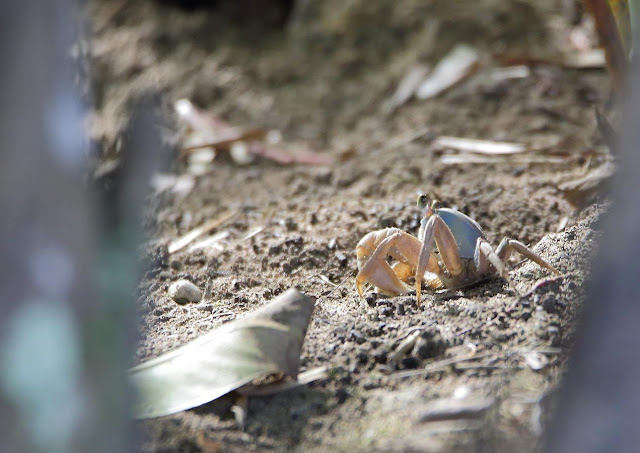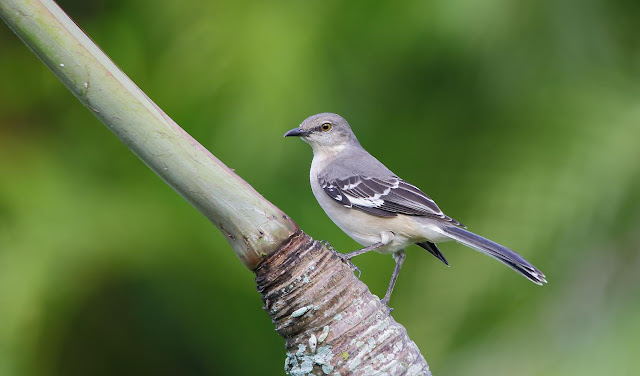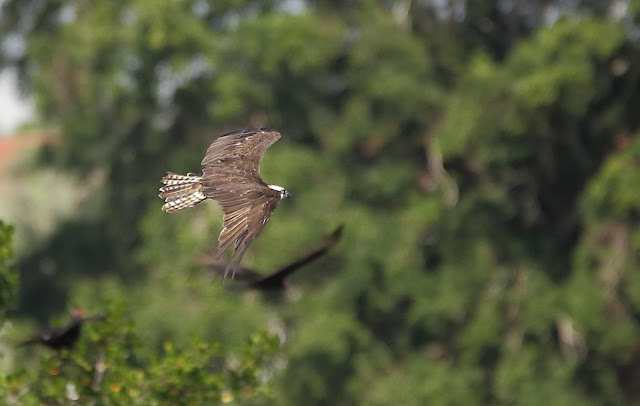En el siguiente enlace podéis ver nuestros próximos viajes nacionales y al extranjero. Espero que os gusten.
Próximos viajes. Next trips.
Hola de nuevo,
Hi again,
En esta ocasión nos vamos al Caribe.
This time we go to the Caribbean.
El viaje no hubiera sido posible de no ser por la hospitalidad de unos muy buenos amigos que nos acogieron como a verdaderos hermanos en esa maravillosa tierra. Una vez más, muchas gracias en nombre de todos.
The trip would not have been possible if not for the hospitality of very good friends who welcomed us like true brothers in this wonderful land. Once more time thank you very much on behalf of all.
Como a mí no me gusta mucho la playa tuve bastante tiempo para pasear y pajarear por esos bellos parajes en busca de aves que no tengo la oportunidad de ver por España.
As I do not really like the beach I had enough time to walk and birding by these beautiful places in search of Birds that have no chance to see in Spain.
En este viaje estuvimos en La Casa de Campo de La Romana, Las Terrenas en Samaná.
On this trip we stayed at La Casa de Campo in La Romana and Las terrenas in Samana.
A continuación os muestro algunas de las aves vistas durante estas vacaciones.
Here I show some of the birds seen during this vacations.
En primer lugar os presento al ave Nacional de La República Dominicana. y que es endémica de La Española.
First of all I present to you the National bird of the Dominican Republic and that is endemic to La Espaniola.
Palmchat.
Smooth-billed Ani.
Gray Kingbird.
Vervain Hummingbird of only 6 cm. and 2.4 gr. is the second smallest bird in the world.
Black-and-white Warbler.
Vi bastantes especies distintas de mariposas.
I saw quite a few different species of Butterflies.
Mariposa monarca (Danaus plexippus).
Monarch Butterfly.
Cigüita Parula (Parula americana) macho.
Male of Northern Parula.
Hembra.
Female.
Porrones bola (Aythya affinis).
Lesser Scaup.
Macho.
Male.
Hembra.
Female.
Common Ground Dove.
Garceta nívea (Egretta thula).
Snowy Egret.
Este insecto captó mi atención.
This insect caught my attention.
Zorzal pardo (Margarops fuscatus).
Pearly-eyed Thrasher.
Greater Antillean Crackle.
Garza azulada (Ardea herodias).
Great Blue Heron.
Ruddy Turnstone.
Cuervo de La Española (Corvus leucognaphalus). Endémico de la Española.
White-necked Crow. Endemic of La Espanola.
Black-crowned Palm-tanager. Endemic of La Espaniola.
Paloma isleña (Columba Squamosa).
Scaly-naped Pigeon.
Nutmeg Mannikins. Invasive Bird.
Male of Prairie Warbler.
Hembra.
Female.
Male of Cape May Warbler.
Hembra.
Female.
Inseparable de Namibia (Agapornis roseicollis). Ave invasora.
Peach-face Lovebird. Invasive Bird.
Copetón Bobito (Myiarchus stolidus).
Stolid Flycatcher.
Turpial de la Española (Icterus dominicensis). Endémico de La Española e islas adyacentes.
Hispaniolan Oriole. Endemic to Hispaniola and adjacent Islands.
Common Moorhen.
Broad-billed Tody. One of my favorites. Endemic to La Española and Isla Gonâve.
Reinita gorjiamarilla (Setophaga dominica).
Yellow-throated Warbler.
Spotted Sandpiper.
Chorlitejo culirrojo (Charadrius vociferus).
Killdeer.
Hispaniolan Lizard-Cuckoo. Endemic of La Espanola.
Mourning Dove.
La bonita playa de Las Terrenas.
The beautiful beach of Las Terrenas.
Garceta grande (Ardea alba).
Western Great Egret.
Y en esta otra con charranes reales (Sterna maxima).
And in this one with Royal Terns.
Charrán real (Sterna maxima).
Royal Tern.
Charranes reales (Sterna maxima) y charranes patinegros (Sterna sandvicensis).
Royal Terns and Sandwich terns.
También había muchas especies de bromeliáceas.
There were also many species of Bromeliads.
Samaná.
Samana.
Algunas especies de lagartijas.
Some species of lizards.
Delfines mulares (Tursiops truncatus).
Bottlenose Dolphins.
Little Blue Heron.
Correlimos tridáctilo (Calidris alba).
Sanderling.
Algunas plantas y árboles en flor.
Some plants and trees in bloom.
Puesta de un anfibio.
Clutch of an amphibian.
Rana toro (Lithobates catesbeianus).
American Bullfrog.
Hembra de gorrión común (Passer domesticus). Invasora.
Female of House Sparrow. Invasive.
Antillean Mango male. Endemic to Hispaniola and adjacent islands.
Precioso.
Beautiful.
Hembra. Esta foto está hecha a pulso y sin ningún tipo de apoyo. No está nada mal.
Female. This photo is made freehand and without any support. It's not bad at all.
Algunas libélulas.
Some Dragonflies.
Reinita Charquera Norteña (Parkesia noveboracensis).
Northern Waterthrush.
Hispaniolan Woodpecker. Endemic of Hispaniola.
Macho.
Male.
Hembra.
Female.
Bananaquit.
Joven.
Juvenile.
Algunas fotos nocturnas.
Some night photos.
Cangrejo azul terrestre (Cardisoma guanhumi).
Blue Land Crab.
American Kestrel male.
Hembra.
Female.
Los pequeños y veloces vencejitos palmares (Tachornis phoenicobia).
The small and fast Antillean Palm-Swifts.
Adult of American Grebe.
Pollo.
Chick.
Gree Heron.
Garceta tricolor (Egretta tricolor).
Tricolored Heron.
Village Weaver. Invasive Bird.
Macho de tordo renegrido (Molothrus bonariensis).
Male of Shiny Cowbird.
Hembra.
Female.
Turkey Vulture.
Northern Mockingbird.
Algunas orquídeas.
Some Orchids.
Merlin.
Male of Yellow-faced Grassquit.
Hembra.
Female.
Cigüeñuela de Cuello Negro (Himantopus mexicanus).
Black-necked Stilt.
Archibebe Patigualdo Grande (Tringa melanoleuca).
Greater Yellowlegs.
Archibebe Patigualdo Chico (Tringa flavipes).
Lesser Yellowlegs.
Las dos especies juntas. Se nota muy bien la diferencia.
The two species together. Difference is notorious.
Belted Kingfisher.
Brown Pelican.
Joven.
Juvenile.
Busardo colirrojo (Buteo jamaicensis).
Red-tailed Hawk.
Red-tailed Hawk.
En esta foto hostigado por un cernícalo americano (Falco sparverius).
In this photo harassed by an American Kestrel.
Gaviota reidora americana (Leucophaeus atricilla).
Laughing gull.
I saw many Ospreys.
Después de comer se limpiaban las garras.
After eating they cleaned their toes.
Aquí con sus capturas.
Here with its catch.
Martinete Coronado (Nyctanassa violacea) adulto.
Adult of Yellow-crowned Night-Heron.
Joven.
Juvenile.
American Redstart male.
Macho inmaduro.
Immature male.
Hembra.
Female.
Magnificent Frigatebird male.
Inmaduro.
Immature.
Hembra.
Female.
Cattle Egret.
Red-legged Thrush.
Y con esta bella ave, el Perico de La Española (Aratinga chloroptera) especie endémica de la Española, me despido de todos vosotros hasta la siguiente entrada.
And with this beautiful Bird, the Hispaniolan Parakeet endemic species of Hispaniola, I say goodbye to all of you until the next entry.Hispaniolan Parrakket. Endemic of La Espanola.



























































































































































































































































































No hay comentarios:
Publicar un comentario